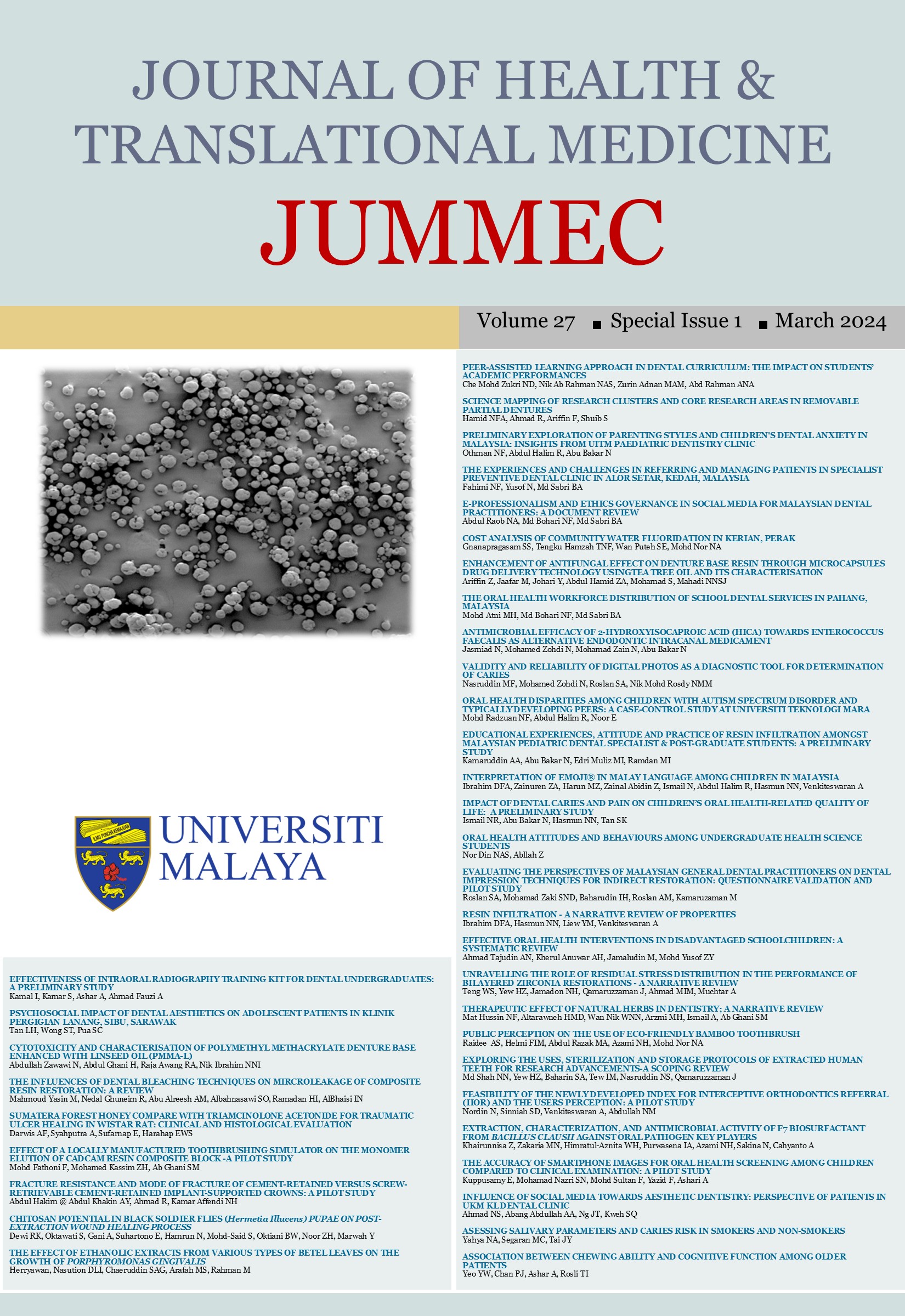PEER-ASSISTED LEARNING APPROACH IN DENTAL CURRICULUM: THE IMPACT ON STUDENTS’ ACADEMIC PERFORMANCES
Received 2024-02-19; Accepted 2024-03-26; Published 2024-03-27
DOI:
https://doi.org/10.22452/jummec.sp2024no1.1Abstract
Peer-assisted learning (PAL) is a peer tutoring strategy that can benefit dental education, such as enhanced experience and comprehension. The objective of the study is to assess the impact of PAL on student learning and the development of clinical skills and to evaluate the students' perceptions of this learning approach. A quasi-experimental study and online cross-sectional study were conducted from March 2022 to March 2023 to assess three main focuses, which are students' clinical competencies, students' perception towards PAL, and academic performances. This quasi-experimental study involved 82 fourth-year dental students divided into two groups to observe either orthodontic impression-taking (group A) or facebow transfer (group B) procedures for six months, followed by assessments of their clinical competencies of both procedures. Pre-seminar and post-seminar tests were done to evaluate the academic performance of fourth-year dental students. A validated questionnaire was used to assess the perceptions of 190 students from year 3 to year 5. There was no significant difference in clinical performance between groups following PAL sessions. There were weak correlations between groups A (p=0.538) and B (p=0.279), indicating a weak relationship between PAL and students’ clinical competencies. However, PAL helps to improve theoretical knowledge, which showed an increase in average scores in the pre-test and post-test. Moreover, the questionnaire responses reported positive perceptions of the PAL approach. The study found no significant correlation between PAL and students’ clinical performances. However, student feedback showed this approach to be beneficial in enhancing the clinical exposure of dental students and should be implemented in dental schools.
Downloads
Downloads
Published
Issue
Section
License
All authors agree that the article, if editorially accepted for publication, shall be licensed under the Creative Commons Attribution License 4.0 to allow others to freely access, copy and use research provided the author is correctly attributed, unless otherwise stated. All articles are available online without charge or other barriers to access. However, anyone wishing to reproduce large quantities of an article (250+) should inform the publisher. Any opinion expressed in the articles are those of the authors and do not reflect that of the University of Malaya, 50603 Kuala Lumpur, Malaysia.


